 Soviet Union (1956)
Soviet Union (1956)
Medium Tank – Fake
The K-1 Krushchev is a fake Soviet tank that was presented in an article titled “Russia’s Secret Weapons”, written by Donald Robinson and published in the June 1956 edition of the American magazine True, The Man’s Magazine. Only five pages long, the bulk of the article is dedicated to Cold War fear mongering, telling the American people of the enormous number of newly designed Soviet weapons which ostensibly vastly outclassed those used by the United States.
The image that led the article showed the then-newly revealed 180 mm S-23 cannon, which True presents as a 203 mm cannon expressly designed to fire nuclear shells. While the S-23 had a nuclear shell designed for it, its primary function was as conventional artillery. The assumption that the S-23 was 203 mm in caliber was not unique to True and was a mistake shared across all Western sources.
Other weapons briefly covered in the article, in mostly correct detail, include the AK-47 rifle, Yakovlev Yak-24 helicopter, 240 mm M240 mortar (which the article also presents as a pure-nuclear weapon, though in reality it was conventional with a nuclear option, as with the S-23), 130 mm KS-30 heavy anti-aircraft gun (which the article misidentifies as 122 mm), 57 mm S-60 medium anti-aircraft gun, and 14.5 mm ZPU-4 light anti-aircraft gun.
The third page of the article gives us a drawing and an illustration of what the magazine describes as a “Killer Tank”. A top-secret new medium tank that was being shown to the free world for the first time, thanks to many men risking their lives to smuggle the information out of the Soviet Union. The K-1 Krushchev [sic], named after First Secretary of the Communist Party Nikita Khrushchev, was said to outclass the American M48 Patton in every way. It had a more powerful engine and greater speed, wider tracks which gave it better flotation, twice the operational range of the M48, a shorter silhouette, at only 9 feet (2.7 m) tall, and it had a more powerful cannon — 100 mm, as opposed to the M48’s 90 mm. The only downside to the K-1 was that it did not exist.

Buried Origin
Bad intelligence has produced a great number of fictional super-tanks, from the 100-ton Landships the Japanese believed the Germans and Soviets were using, to the British-imagined “Adolf Hitler Panzer”, with a casemate in the front and a turret in the back. Was the K-1 Krushchev just another case of hearsay and overactive imagination, or was it more deceitful? Based on the evidence available, or rather total lack thereof, and the fact that the K-1 only ever appeared in True and nowhere else, it is almost certain that it was fabricated for the magazine.
Most tank designs borne out of incorrect intelligence in the United States come from the CIA (Central Intelligence Agency), not, as True claimed with the K-1, the Department of Defense (DoD). It is conceivable that intelligence information collected by the CIA could make its way through channels to end up at the relevant authority within the DoD (even though an official structure for this did not exist in 1956), but there is no record of this ever happening for the K-1. The CIA chose not to share with other branches, as far as we are aware, far more detailed intelligence items than a “super-tank” whose only specifications are “9 feet (2.74 m) tall, 100 mm cannon, operational range ~150 miles (~240 km)”.
We will likely never know the exact origin of the K-1 design. Based on the mostly factual information presented for the other weapons in the article, it does not seem likely that the K-1 was a deliberate fake meant to deceive. At worst, it was an earnest — yet incompetent — attempt to provide a glimpse behind the Iron Curtain. At best, it was a sensationalist rendition of a real design, most likely the Object 416, which was only known through rumor at the time. The artist of the drawing of the K-1 was Sam Bates, an employee of True. It is likely he who was responsible for the design, and did his best based on the information provided to him.
The Design

As practically no hard data was given for the K-1, not much can be said about the design other than from a visual perspective. It is a handsome design, with surprisingly few flaws as far as fake tanks go. It has the roadwheel spacing arrangement of the T-34, with a larger gap between the 1st and 2nd, and 2nd and 3rd roadwheels than between the rest, rather than the roadwheel spacing of the T-44 and T-54, which had a larger gap between only the 1st and 2nd roadwheels.
As it is a rear-turreted design, it would follow that the transmission is at the front, however, the sprockets at the front of the hull are mounted too far forward to be inline with the transmission, and could only be powered through unnecessarily spindly final drive units. The sprockets at the front of the tank are also smaller in diameter than the sprockets at the rear, which would indicate that they are idler wheels. The rear sprockets are better positioned to be the drive sprockets, but if this was the case, then the power from the engine would have to be transmitted to the rear-mounted transmission via a drive shaft running underneath the turret, which Soviet tank designers were averse to doing. Regardless of which was the drive sprocket, the drawing of the K-1 shows it to have a toothed idler wheel, a feature practically unheard of among Soviet tanks.
Visible at the rear of the tank is a set of exhaust pipes, the routing of which makes no sense for a front-mounted engine, which would exhaust over the side. The rear of the hull is unnecessarily flared, as it would be to provide ventilation for a rear-mounted engine. Finally, the location of the driver’s hatch places him right in the middle of the engine compartment, rather than behind or in front of it, as would be expected. We must be generous and assume the driver’s compartment is offset to the side, otherwise, there would be no space for the engine at all. With all of these peculiarities in mind, it is obvious that the person who designed the K-1 did not have an understanding of the automotive changes that must accompany a rear-turreted tank design. The K-1 seems to want to fit the engine and transmission in the impossibly small area rearward of the turret, and give the driver a bourgeois helping of legroom.
Atop of the fenders is the usual Soviet arrangement of stowage bins, and in the side-on illustration, a gun travel lock is shown mounted to the upper glacis. Uncharacteristic for a Soviet design, the front of the hull is rounded and apparently riveted. The presence of the line of rivets above the fender at the front of the hull serves no apparent purpose, other than possibly holding on a rounded sheet metal guard extension over the fender. The usefulness of such a feature would be negligible.
The turret of the K-1 resembles a combination of the turrets of the T-54 Model 1949 and M48 Patton. It is slightly taller than most Soviet turrets, which tend to be squat. It has at least one large coaxial machine gun. Literal interpretation of the images would indicate that it has two, one on either side of the cannon, as the drawing mirrors the illustration in almost all respects except for the antenna and smoke discharger. Having two machine guns would leave no space for the gunner’s optics, so we must assume there is only one. The machine gun would likely be on the right-hand (starboard) side, as Soviet tanks traditionally place the gunner on the left. This means that the drawn picture of the K-1 is the “correct” representation out of the two images.
Likewise, both images seem to place the commander’s cupola on the far side of the tank, and if taken in conjunction that places the cupola in the center, above the cannon breech. As Soviet tanks usually place the cupola on the left, the drawn picture is again a better representation. The cupola itself is a woefully outdated design with no vision blocks and a vertically-opening hatch that is sure to draw attention. On the left-hand (port) side of the turret is a 5-barrel smoke discharger in a “forward, backward, sideways” arrangement that would only deploy smoke to the direct left of the tank, not in front of the tank, as would be desirable. At the rear left of the turret is a radio antenna.
Based on the only measurement provided, namely the tank being 9 feet (2.74 m) tall, we can calculate rough measurements for the rest of the design. If from the bottom of the track to the top of the cupola is 9 feet, then the man shown in the illustration is 5 feet 11 inches (1.8 m) tall. The hull of the K-1 is 25 feet (7.63 m) long and 5 feet 7 inches (1.7 m) tall. The barrel of the cannon is 18 feet 10 inches (5.75 m) long, and the tank has an overall length of 34 feet 3 inches (10.44 m). The roadwheels are about 32.6 inches (830 mm) in diameter, the drive sprocket 29 inches (740 mm), and the idler wheel 23.6 inches (600 mm).
The K-1’s 100 mm cannon’s barrel is slightly longer than the standard D-10 family of Soviet tank guns, and with its pepperpot muzzle brake, more closely resembles the 100 mm T-12, however that gun only entered service in 1961 and was never mounted on a vehicle.

Similar Real Designs
Although the K-1 was fake, there are a number of very similar real Soviet projects from the same era. In 1949, the OKB IC SV (Design Bureau of the Engineering Committee of the Armed Forces) produced several concepts for a heavy tank called the K-91, one version of which placed the turret in the rear. The K-91 shares almost no commonality with the K-1, and even the similarity in names is coincidental. The K-91 was a heavy tank with a very squat hull and numerous small roadwheels. It would have been armed with the 100 mm D-46T, a short-lived development of the D-10T (used on the T-54) that in turn gave rise to the D-56T (used on the T-62A).

Later in 1949, Factory No. 75 (Kharkov) began work on a light tank/self-propelled gun armed with a 100 mm M-63 cannon in a rear-mounted turret. The vehicle was designated Object 416, and a prototype was completed around the end of 1952. The Object 416 was too much of an oddball for the Red Army, and was passed over in favor of better designs for the role. If the K-1 Krushchev has any basis in reality, it was most likely inspired by the Object 416.

At the same time Factory No. 75 was wrapping up work on the Object 416 in 1953, another project was begun to design a replacement for the T-54. Kharkov’s offering for this project was the Object 430, during the early designing of which a rear-mounted turret was considered, but was not pursued.
Another submission for the program to replace the T-54 came from an engineer named Gremyakin. It is not currently known where Gremyakin was employed, though it is possible that he worked at Factory No. 75 and that his proposal and the rear-turreted Object 430 are one and the same. Gremyakin’s medium tank resembled the rear-turreted K-91, and was armed with a 122 mm D-25T.
The unifying feature across all of these projects was that they all placed the driver in the turret. Placing the driver within the turret ring has long been a dream of tank designers, as it saves a great deal of room in the hull and allows the entire tank to be made smaller. Unfortunately, due to the fact that the turret moves, a complex system is necessary to keep the driver’s seat facing forward, and even the most successful driver-in-turret designs do not prevent him from getting motion sickness. Were the K-1 a real Soviet design, the driver would likely be in the turret, as it was with all its rear-turreted brethren, and like them, the design would not have gone very far.
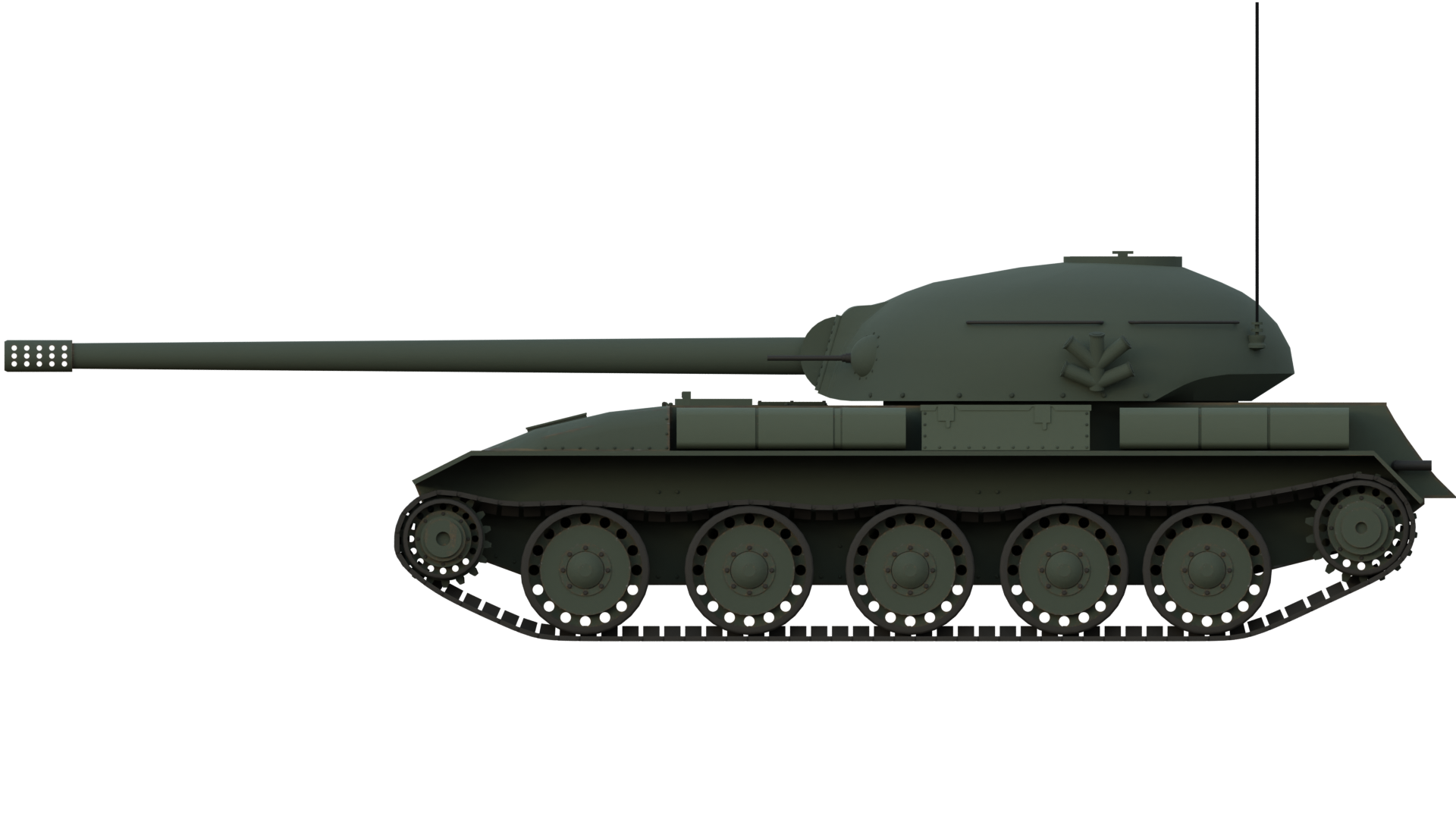
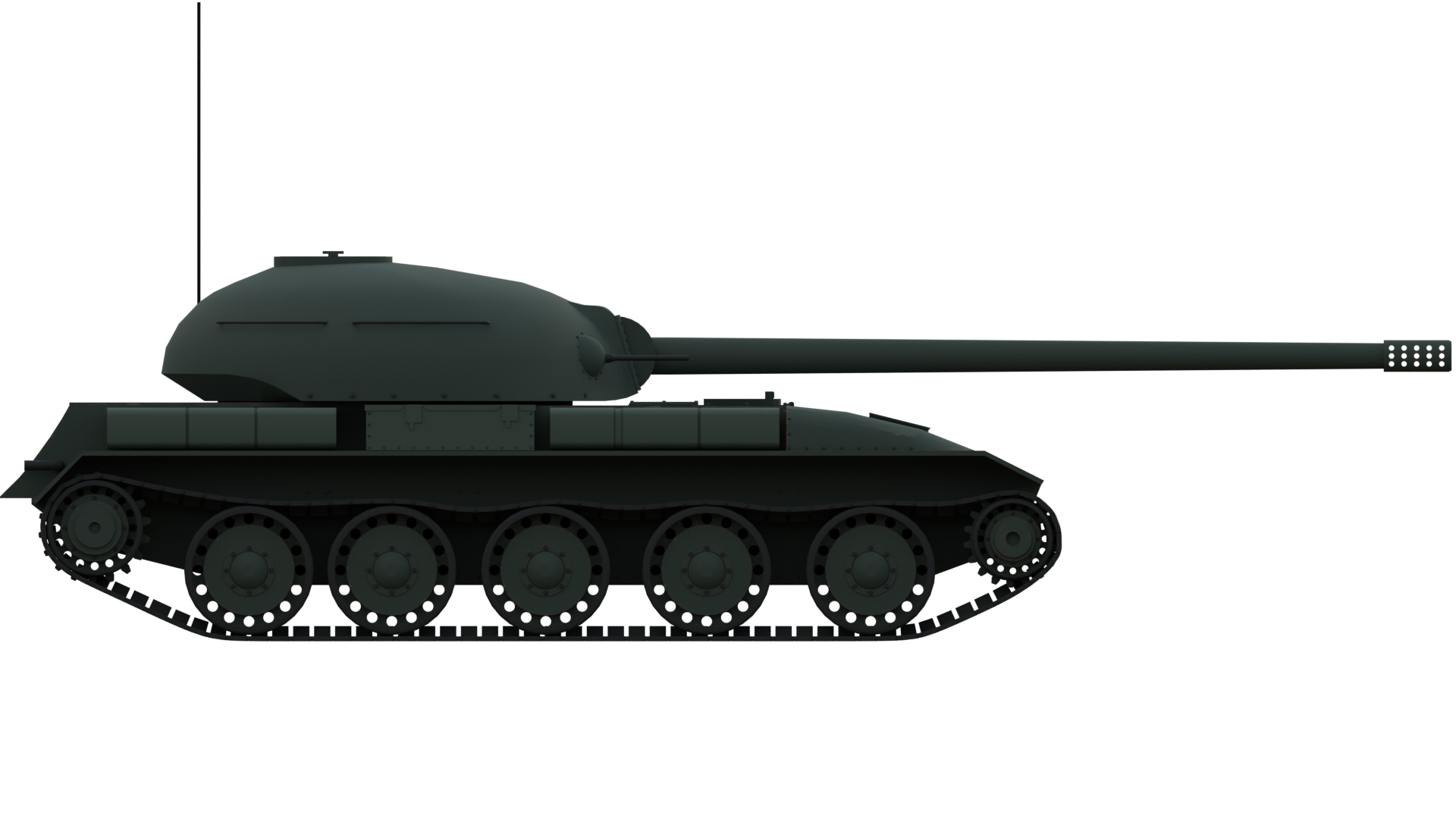
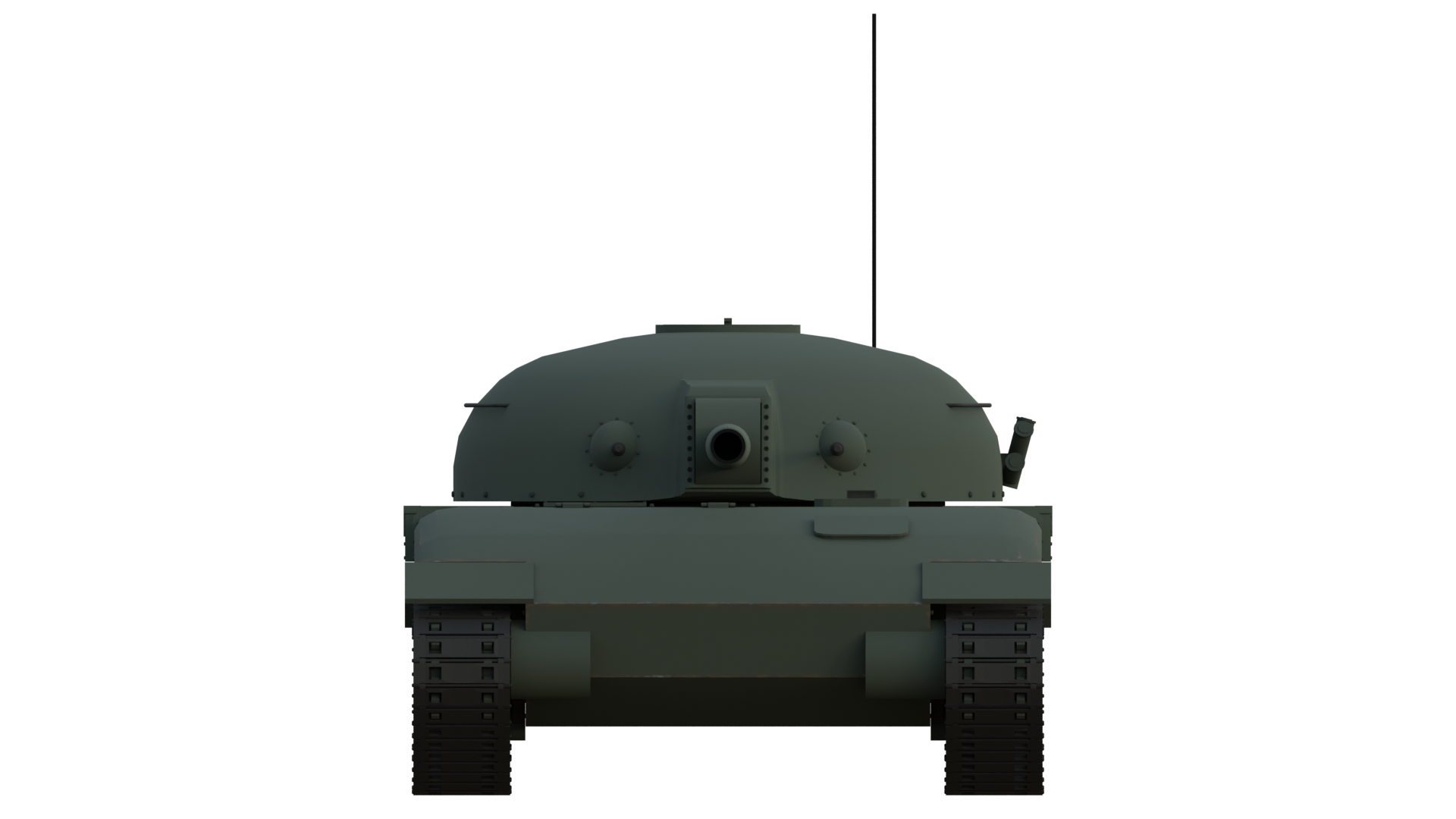
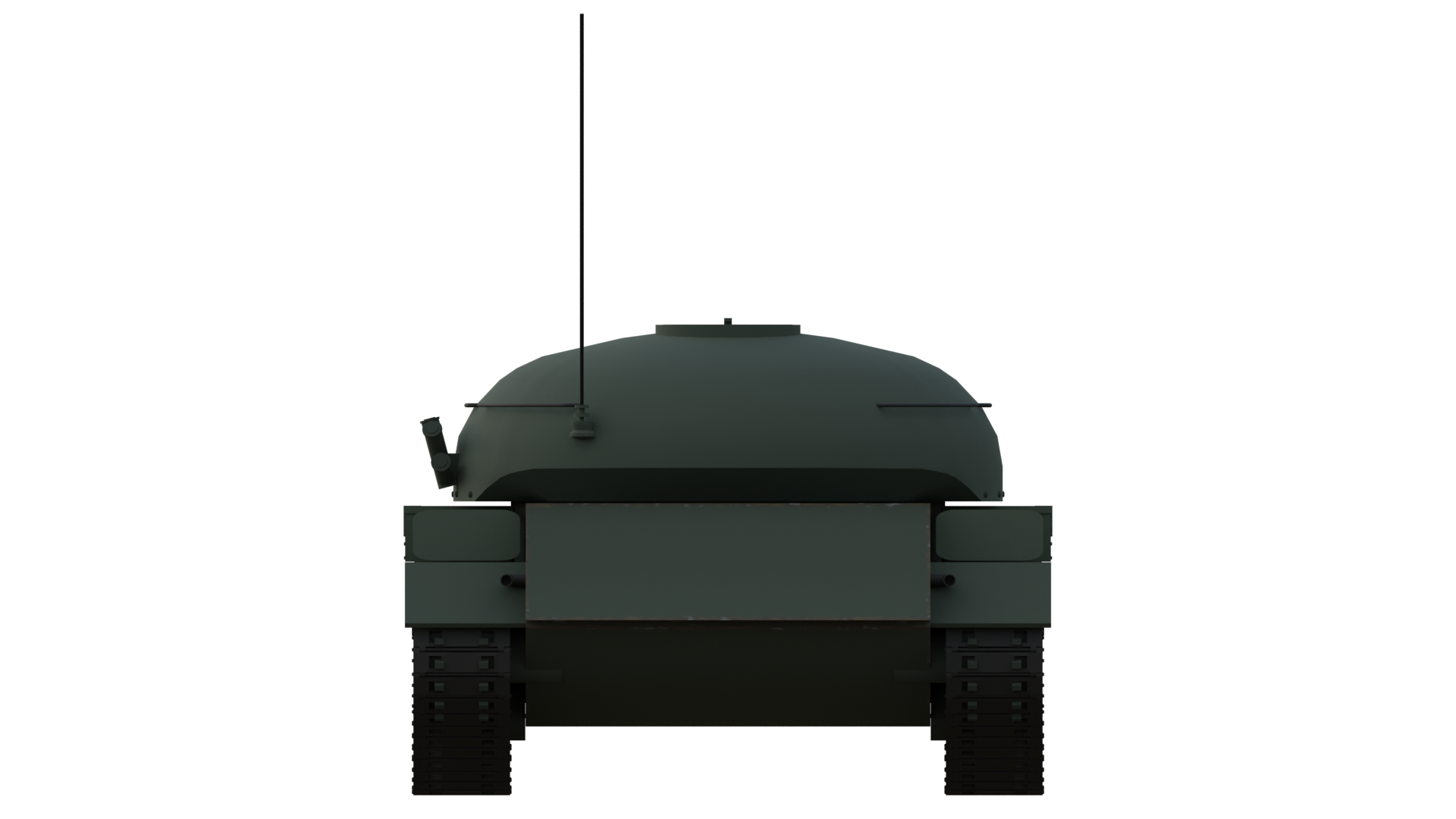
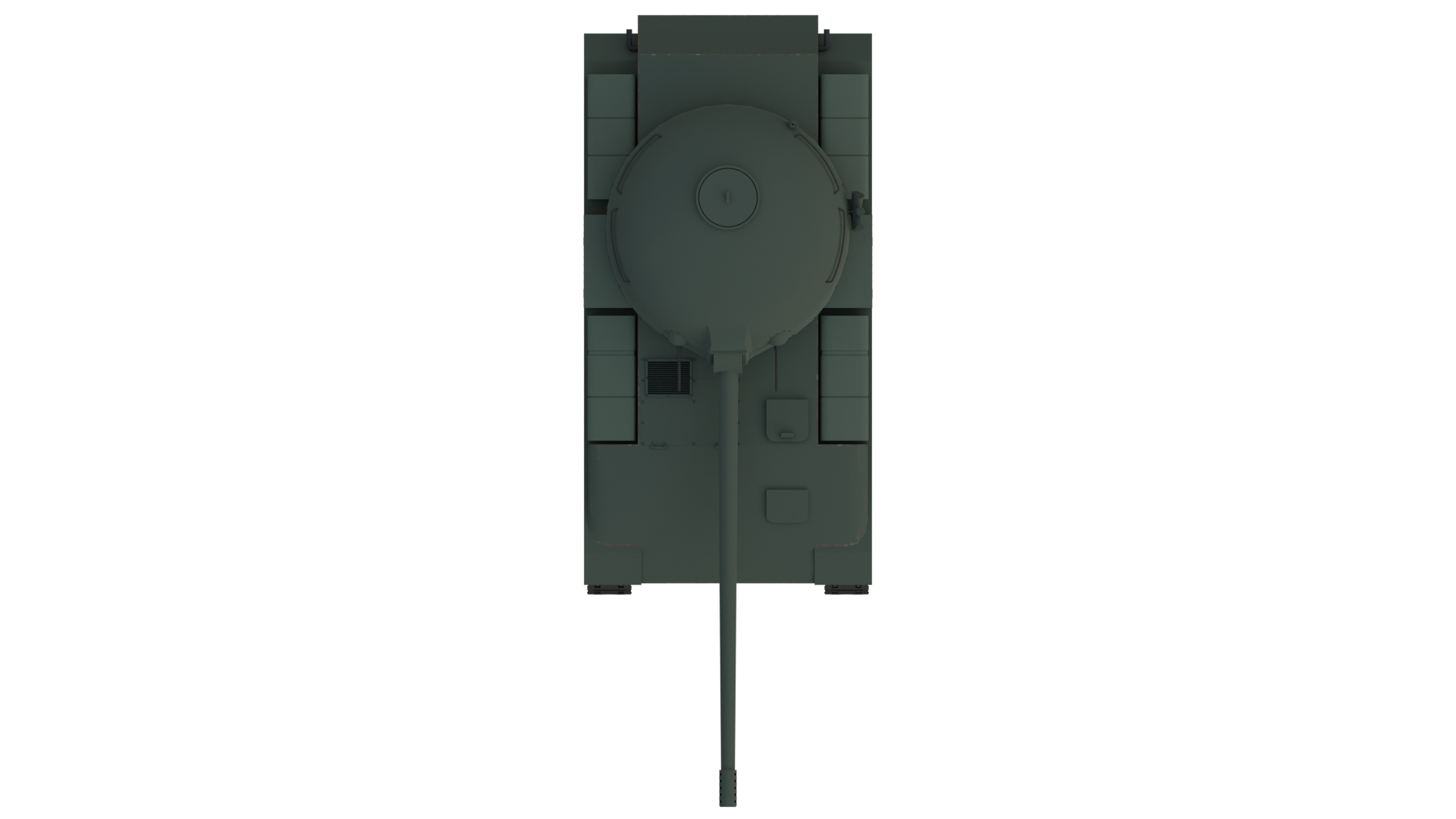
Illustrations of the K-1 Krushchev produced by Phantom_25_Sniper.
Sources
True, The Man’s Magazine, June 1956 Issue — Russia’s Secret Weapons by Donald Robinson

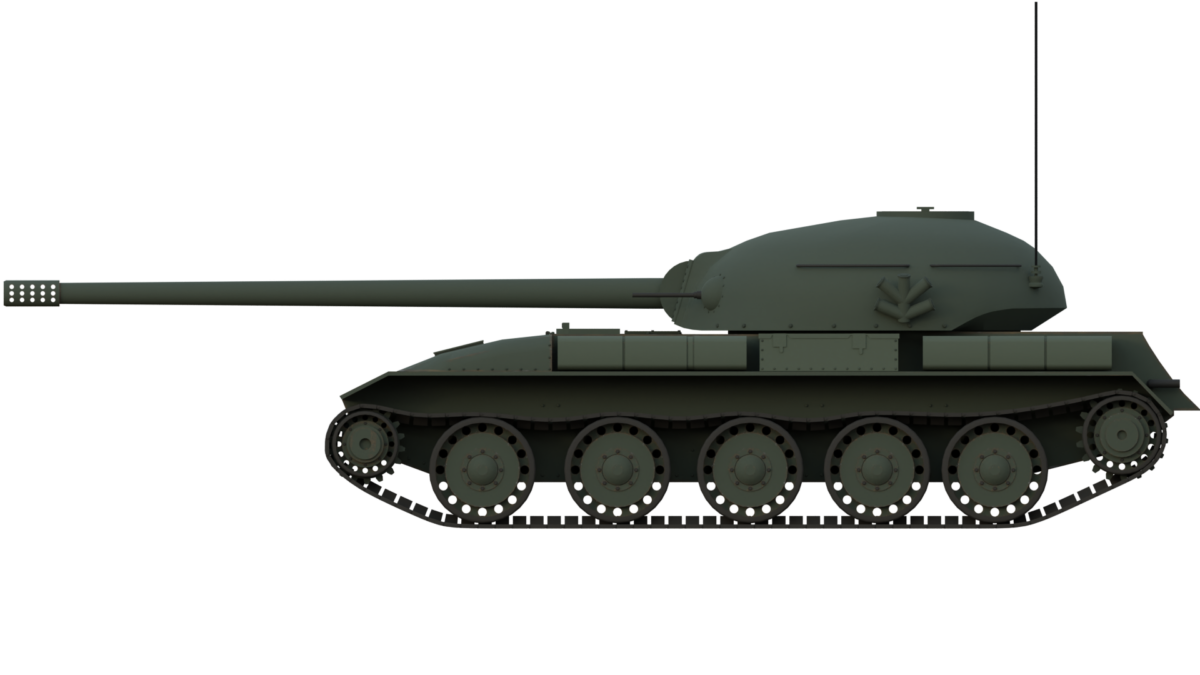
2 replies on “K-1 Krushchev (Fake Tank)”
the British-imagined “Adolf Hitler Panzer”, with a casemate in the front and a turret in the back.
What tank is this, and can I have an image? It sound interesting.
Unfortunately there is no image of that, just a description.